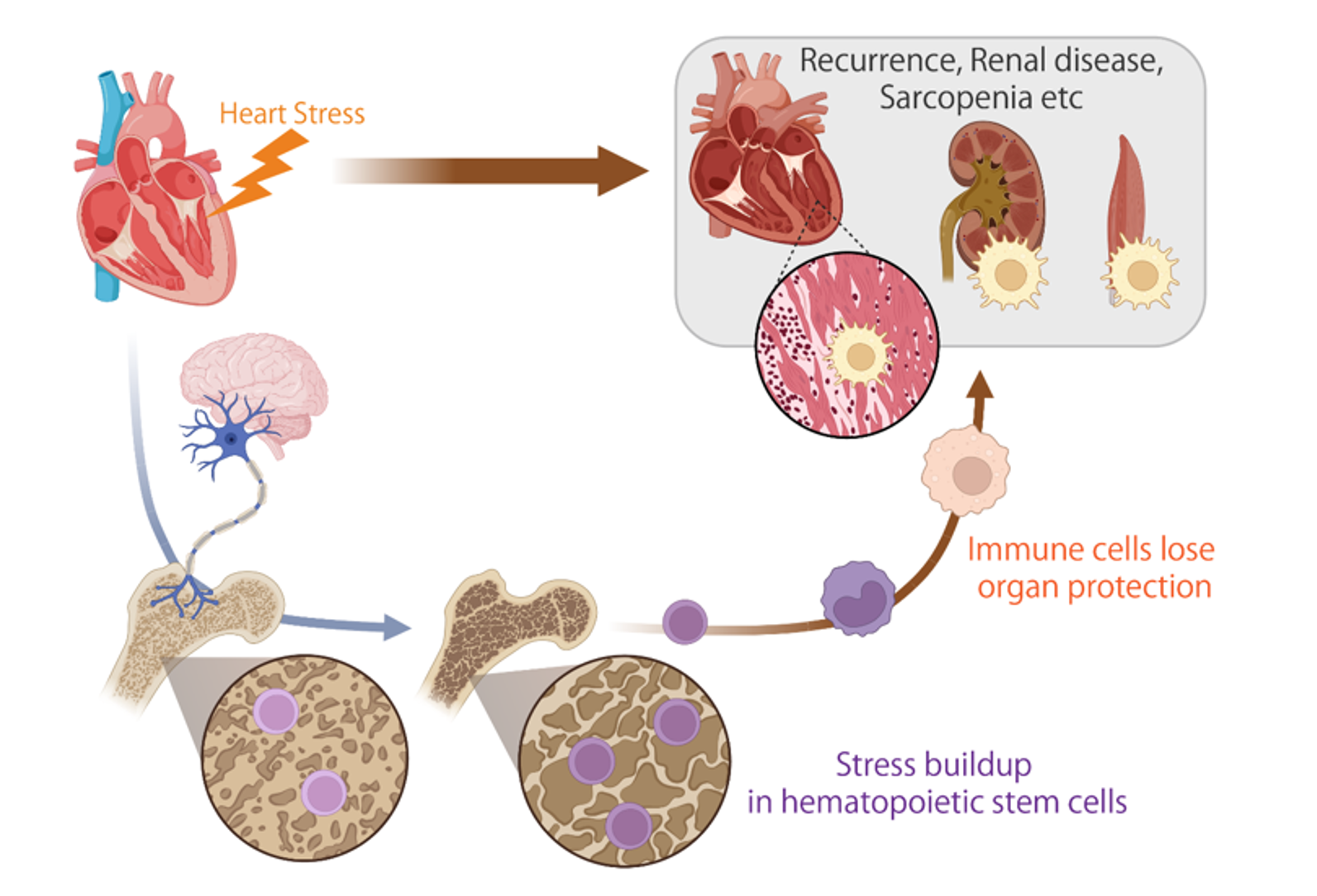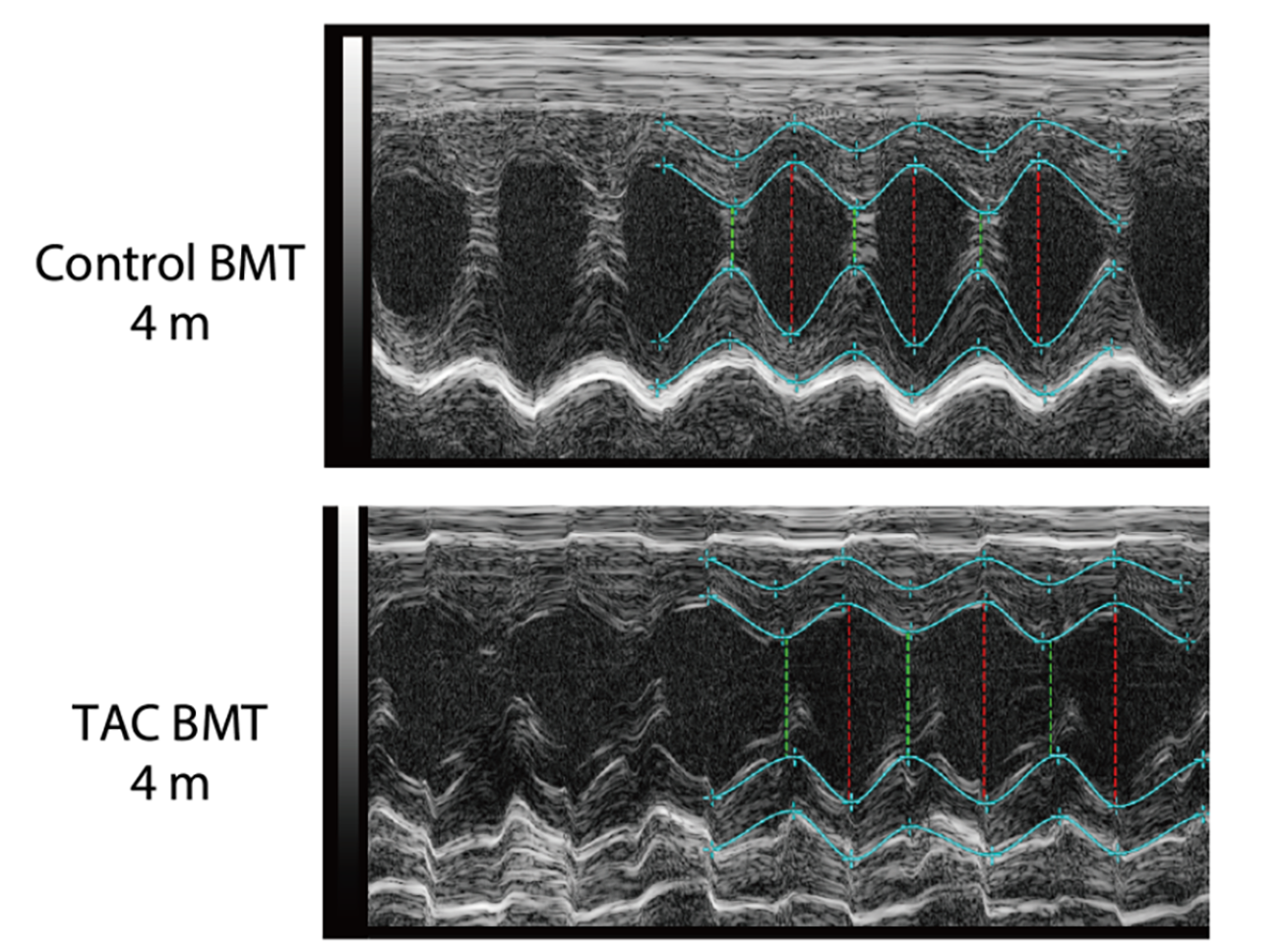
Maintaining a happy heart. A healthy diet, active lifestyle and adequate sleep are all known to help maintain and improve cardiovascular health, but some people may still be at risk due to a number of factors, such as family history and age. © Perfect Wave 003/ Envato Elements
The stress of heart failure is remembered by the body and appears to lead to recurrent failure, along with other related health issues, according to new research. Researchers have found that heart failure leaves a “stress memory” in the form of changes to the DNA modification of hematopoietic stem cells, which are involved in the production of blood and immune cells called macrophages. These immune cells play an important role in protecting heart health. However, a key signaling pathway (a chain of molecules which relays signals inside a cell), called transforming growth factor beta (TGF-β), in the hematopoietic stem cells was suppressed during heart failure, negatively affecting macrophage production. Improving TGF-β levels could be a new avenue for treating recurrent heart failure, while detecting accumulating stress memory could provide an early warning system before it occurs.
Healthier lives and improved well-being are among the United Nations’ global Sustainable Development Goals. Positively, a recent study shows that life expectancy worldwide is projected to increase by about 4.5 years by 2050. Much of this is thanks to public health efforts to prevent disease and improved survival from illnesses, such as cardiovascular disorders. However, heart disease is still the leading cause of death worldwide, with 26 million people estimated to be affected by heart failure.

Illustration of stress buildup in stem cells. This illustration shows that during heart failure, stress signals are transmitted to the brain, which then communicates through the nerves to the hematopoietic stem cells in the bone marrow, accumulating as stress memory. The stress-accumulated stem cells produce immune cells with reduced protective capabilities for organs such as the heart, kidneys, and muscles. © 2024 Y. Nakayama, K. Fujiu, T. Oshima et al./ Science Immunology
Once heart failure has occurred, it has a tendency to reoccur along with other health issues, such as kidney and muscle problems. Researchers in Japan wanted to understand what causes this recurrence and the deterioration of other organs, and whether it can be prevented.
“Based on our earlier research, we hypothesized that recurrence may be caused by stress experienced during heart failure accumulating in the body, particularly in hematopoietic stem cells,” explained Project Professor Katsuhito Fujiu from the Graduate School of Medicine at the University of Tokyo. Hematopoietic stem cells are found in bone marrow and are the source of blood cells and a type of immune cell called macrophages, which help to protect heart health.
By studying mice with heart failure, the researchers found evidence of stress imprinting on the epigenome, that is, chemical changes occurred to the mice’s DNA. An important signaling pathway, called the transforming growth factor beta, which is involved in regulating many cellular processes, was suppressed in the hematopoietic stem cells of mice with heart failure, leading to the production of dysfunctional immune cells.
This change persisted over an extended period of time, so when the team transplanted bone marrow from mice with heart failure into healthy mice, they found that the stem cells continued to produce dysfunctional immune cells. The latter mice later developed heart failure and became prone to organ damage.

Echocardiography of mice hearts. Transplantation of bone marrow from mice with heart failure (TAC, meaning transverse aortic constriction) into healthy mice (control) led to cardiac dysfunction, as shown in this echocardiogram. The light blue lines represent the motion of the anterior and posterior walls of the heart. In the upper diagram, the movement is vigorous and healthy. By contrast, in the lower diagram, the movement is impaired, and the distance between the walls is widened. This is characteristic of heart failure, where the heart’s movement deteriorates and the heart enlarges. © 2024 Y. Nakayama, K. Fujiu, T. Oshima et al./ Science Immunology
“We termed this phenomenon stress memory because the stress from heart failure is remembered for an extended period and continues to affect the entire body. Although various other types of stress might also imprint this stress memory, we believe that the stress induced by heart failure is particularly significant,” said Fujiu.
The good news is that by identifying and understanding these changes to the TGF-β signaling pathway, new avenues are now open for potential future treatments. “Completely new therapies could be considered to prevent the accumulation of this stress memory during hospitalization for heart failure,” said Fujiu. “In animals with heart failure, supplementing additional active TGF-β has been shown to be a potential treatment. Correcting the epigenome of hematopoietic stem cells could also be a way to deplete stress memory.”
Now that it has been identified, the team hopes to develop a system that can detect and prevent the accumulation of stress memory in humans, with a long-term goal of being able to not only prevent the recurrence of heart failure, but also catch the condition before it can fully develop.







